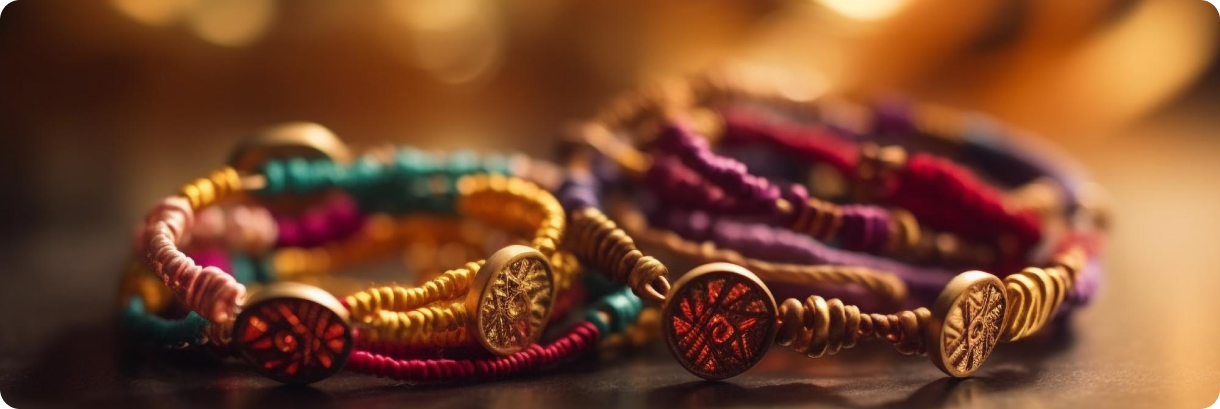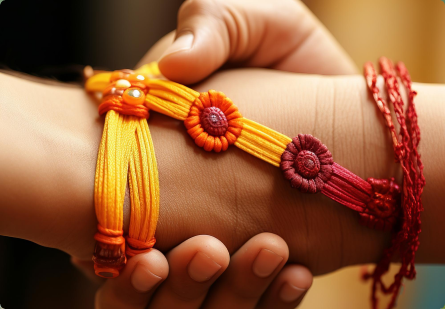
In the rich culture of Hindu traditions, the Kalava, also known as Mauli, emerges as a symbolic embodiment of spiritual and scientific significance. Comprising three threads—typically fashioned from cotton and adorned in red, yellow, and green or white—the Kalava transcends mere aesthetics.
Sacred Threads: A Trishakti Symbolism
The three threads of Kalava intricately symbolise Trishakti, embodying the divine trinity of Brahma, Vishnu, and Mahesh (Shiva). Woven into Hindu rituals, the act of donning Raksha Sutra or Kalava is believed to invoke a protective shield against malevolent forces. As per ancient wisdom, those who adhere to the rituals find themselves guarded against various forms of adversity.
Mauli: More than a Thread, a Spiritual Beacon
Also known as Mauli, this sacred thread holds paramount importance. ‘Mauli’ translates to ‘topmost,’ emphasising its elevated spiritual standing. It draws a profound connection to the divine, reflecting its symbolic ties to the highest realms. Tying Mauli around the wrist signifies protection and invokes blessings from the Tridevas (Brahma, Vishnu, and Shiva) and Tridevis (Lakshmi, Parvati, and Saraswati).

Weaving the Threads of Tradition
The tradition of Mauli goes beyond symbolism; it encapsulates stories rooted in mythology. From Lord Vamana tying it on demon king Bali’s wrist to Indrani securing Lord Indra’s safety before battle, the threads of Mauli carry narratives that echo through the ages. This ancient practice persists as a reminder of divine protection
Scientific Threads: Tying Health and Tradition
Beyond its religious connotations, the act of tying Mauli holds potential psychological and health benefits. Scientifically, the ritual may contribute to an individual’s well-being by fostering a sense of security and connection to cultural roots. Health beliefs associated with Mauli include its role in preventing various diseases, attributing its effectiveness to the wrist’s central role in the body’s structural control.
Embracing Tradition for a Holistic Well-being
In essence, Mauli transcends its physical form, intertwining spiritual and scientific dimensions. Tying these threads signifies not only a connection to ancient traditions but also a holistic approach to well-being, where the sacred and the scientific coalesce into a harmonious tapestry.
Astrological Significance
Astrologically, the three colors used in Mauli are yellow, orange, red, and sometimes green.These colors signify various planets, and keeping them nearby is believed to enhance their effects. For instance, keeping red color is thought to enhance the influence of Mangal(Mars), providing energy and protection from the evil eye. Yellow and orange colors areassociated with enhancing the influence of Jupiter and the Sun, respectively, believed tobring abundance, fame, and recognition. Green color is associated with the heart chakraand the planet Mercury, believed to instil confidence and contribute to the expansion of business.
Astrokun’s astrologers are well-versed in these profound insights and the simple rituals associated with them, making it easier for individuals to follow. Their deep knowledge of various spiritual topics serves as their modus operandi, enhancing the understanding and effectiveness of these practices. If you have any specific questions or if there’s anything else you’d like to discuss regarding astrology or spirituality, feel free to share!

Leave a Reply